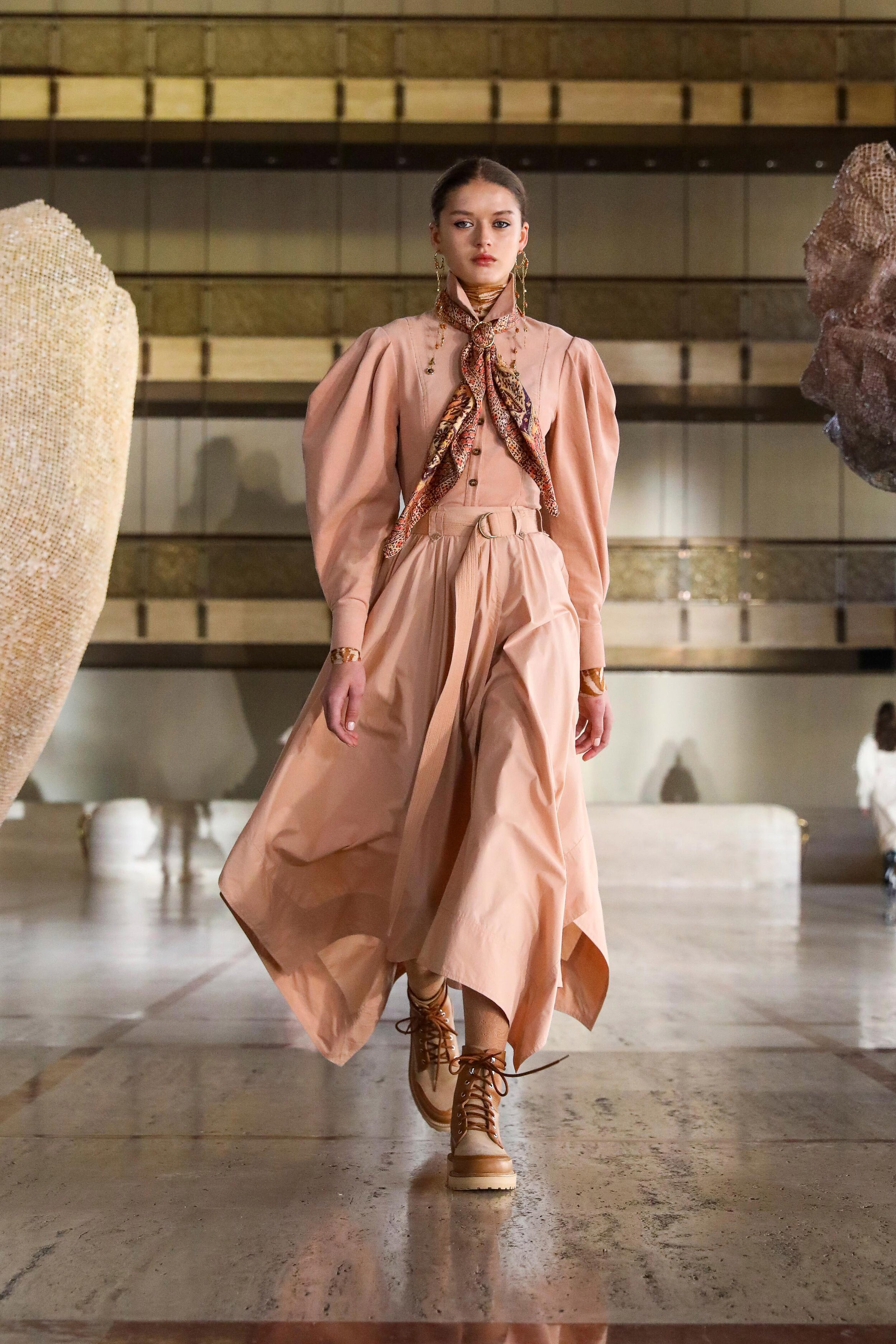Type 'cottagecore' into any social media search, and nostalgic visuals of pastoral life will fill your screen. You'll find just about everything, from photos of cows with heart-shaped birthmarks roaming on open grass fields to how-to videos of people preparing picnic-ready shortbread cookies with homemade strawberry jam. You'll find images and videos of cute cottages located at the edge of unbridled forests filled with frogs, mushrooms, snails, and shimmering streams. Cottagecore fashion will also pop up, with style guides filled with prairie dresses, pressed accessories, lace-trimmings, and embroidered textiles. Why now? Let’s use fashion psychology to delve into the aesthetic’s popularity.
This rural imagery fattened out on the internet during the pandemic, and like any aesthetic, it came with its own set of core values. For cottagecore, freedom from societal constructs, religious and spiritual tolerance, and an eco-conscious mentality are among them. The overall aesthetic is essentially a queer, green, and anti-capitalist fantasy that romanticizes the pleasantries of a secluded pastoral life.
Not only is the idea of getting outside and riding bikes down shaded dirt roads to go berry-picking completely idyllic, but it also felt like a safe alternative to the busy and crowded city life many of us led up until the pandemic. In many ways, cottagecore's rise during 2020 and early 2021 was a counter-response to the increased time spent cooped up at home, staring at screens. People were able to escape into the nostalgic landscape of the aesthetic, which made for a great emotional payout during that time. Even if you've never considered binding a book in your life, the option to revert to what once worked for us, for humanity, is a natural response to times of psychological duress.
On the fashion front, cottagecore might've entered your radar ever since Lirika Matoshi's Strawberry Dress (the most coveted dress of Summer 2020) began cropping up on TikTok or when the Hill House Home’s popular Nap Dress took over our Instagram feeds. Both became instant staples when governments began lifting the lockdown, and we could lounge in the grass for a picnic or take day trips to the countryside. Rest assured, as we’ve moved into 2021, cottagecore’s influence on fashion has only risen. We’re only beginning to see designers, like Ulla Johnson, take visual cues from the aesthetic onto the runway. In her Fall 2021 collection, the designer features billowy blouses, decorative bows, and patterned neckerchiefs styled with combat boots for a rustic yet feminine look. You can achieve the cottagecore look for yourself by wearing prints, like gingham and plaid, or through lightweight paneled linen dresses. If you're not an outdoorsy person, but the aesthetic's romance and nostalgia still speak to you, opting for fashion styles associated with the aesthetic might serve as the perfect middle ground between mushroom foraging and ordering Uber Eats. With a high-waisted pinafore skirt and a picnic inspired handbag, you tap into the tranquility of cottagecore's old-timey vibe without having to take any hay fever relief pills.
The Strawberry Dress by Lirika Matoshi that took over TikTok, pictured on Isabelle Chaput, with a matching variation on Nelson Tiberghien. (Photo: nytimes.com)
But why did this trend crop up now? As always, changing fashions are really just a mirror of the collective conscious, of society at large. And perhaps the gradual exodus for many from big cities like New York to Long Island or upstate, and from London to Kent and other countryside enclaves, proves our disenchantment with the city, and our new focus on the folksy.
Ulla Johnson’s contemporary take on cottagecore imbued the FW21 collection presented at NYFW. (Photo: Jonas-Gustavsson via vogue.com)
Although cottagecore as a concept seems like a recent phenomenon, its ethos dates as far back as eighteenth-century pastoral English poetry, where writers harkened back to the intrinsic value of nature through romanticism as a way to ease the anxieties that came with living in an industrialized society. We saw parallels in society at large, as staying in and slowing down made headway for a ton of activities associated with the bygone era, like knitting, bookbinding, baking bread, and gardening. For many, reverting to these staple activities was a grounding experience that served as a way to feel connected with the earth during a complicated time in human history.
We haven't entirely escaped the carnage of Covid-19, and for now the cottagecore aesthetic and its cosplayers provide psychological and emotional fulfillment by opening the door to a healing revisitation of our childhood innocence and comforts of the known, even if it is for 15 to 60 seconds while scrolling through a feed. As for the lifespan of the aesthetic, cottagecore shows no signs of fading anytime soon. So, if you haven’t already, it might be high time to get cozy in an oversized cardigan, and invest in a pair of clogs and a sunhat for the upcoming spring.













In the world of post-pandemic dressing, one word has taken social media by storm: cheugy (pronounced: chew-gee). In the worlds of fashion and lifestyle, cheugy describes a look, a thing or a person that’s considered out of date.